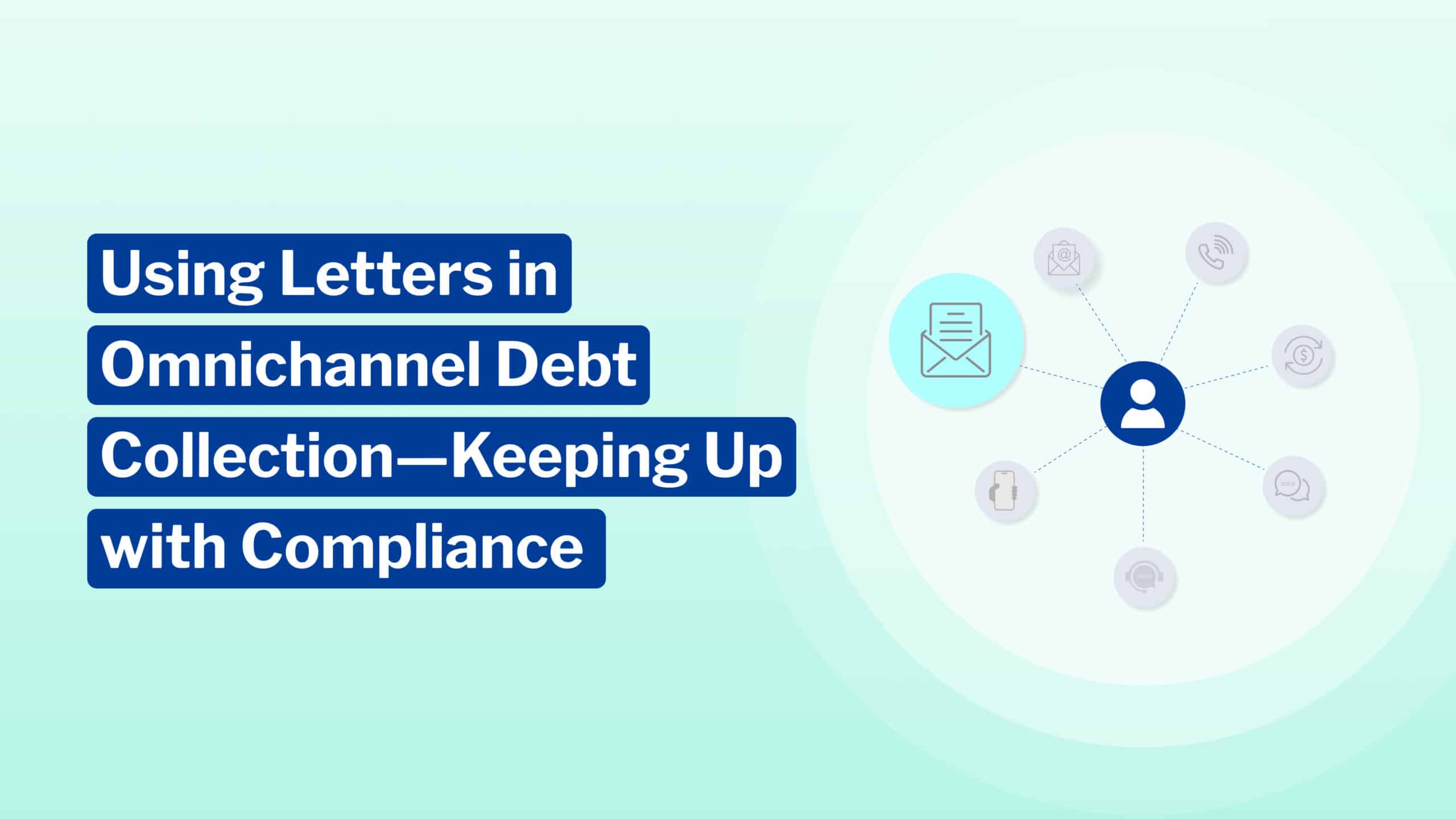
Direct mail is the old-school method for reaching consumers regarding their debt, but over time several factors have reduced the effectiveness of letters in collection communications—consumer preference and cost being the most prevalent. But specific state compliance regulations and other use cases prove that “snail mail” still has its place in the omnichannel mix.
When are Letters Necessary in Collection Communications?
While the cost of physically mailing letters may be a deterrent to snail mail, businesses benefit when direct mail is used to meet compliance requirements. We’ll go into more detail around regulations in the next section.
Another benefit of mailing letters is most apparent when the delinquent account does not have a valid email address or phone number on file. Letters ensure that these individuals still receive crucial notifications regarding their accounts, preventing any potential oversight, and provide essential information related to their debt in a clear and organized manner.
Additionally, the formality of letters can be necessary to help raise awareness of outstanding debt for consumers that may not be as trusting of digital communications and choose to ignore phone calls. This is especially true for those who may not be as computer savvy or familiar with online financial transactions.
And just like with all other communication channels in debt collection, consumer preference also plays a role but in an even greater way with traditional letters: if a consumer clearly states that they only want to be contacted through physical mail (either to them directly or to their legal representation), businesses and collectors must abide. These types of requests lead to the main use case for letters…
The Main Use Case for Snail Mail: Compliance
The primary use case for using the direct mail channel is for compliance. Several laws, regulations, and governing bodies—including the Fair Debt Collection Practices Act (FDCPA), Regulation F, Consumer Financial Protection Bureau (CFPB), among others—define how, when, and what needs to be included in consumer communications around debt collection, and letters were the original initial compliant consumer communication.
Yet the prevalence of digital has forced these regulations to evolve, and today there is no federal law requiring consent to communicate via email vs direct mail.
But there are some exceptions to this general rule:
- Some states/jurisdictions require consent to communicate via email and text, which must be obtained through physical letters and documentation.
- In some instances, consent to send legally required notices electronically must also be obtained through physical mail.
- Some states require certain legally required notices to be mailed.
See Success and Real World Results with TrueAccord
Understanding the nuances of compliance and when communications fall under certain laws can be challenging without legal experts keeping a finger on the pulse of these evolving regulations—but TrueAccord ensures success with code-based compliance so all our engagement channels meet the requirements for each unique account’s circumstance and know when letters are the right choice for outreach.
While our omnichannel strategy is digital-first, we understand that digital isn’t always the best or most viable option to connect with some consumers. Knowing when, where, and why a letter might be the ideal choice for consumer communication helps TrueAccord and our clients remain compliant and cost-effective. Depending on a consumer’s location and contact information, a letter may be the best bet to garner engagement.
With advanced code-based compliance and scrubbing capabilities, TrueAccord’s omnichannel approach proves even snail mail can still be effective in collections.